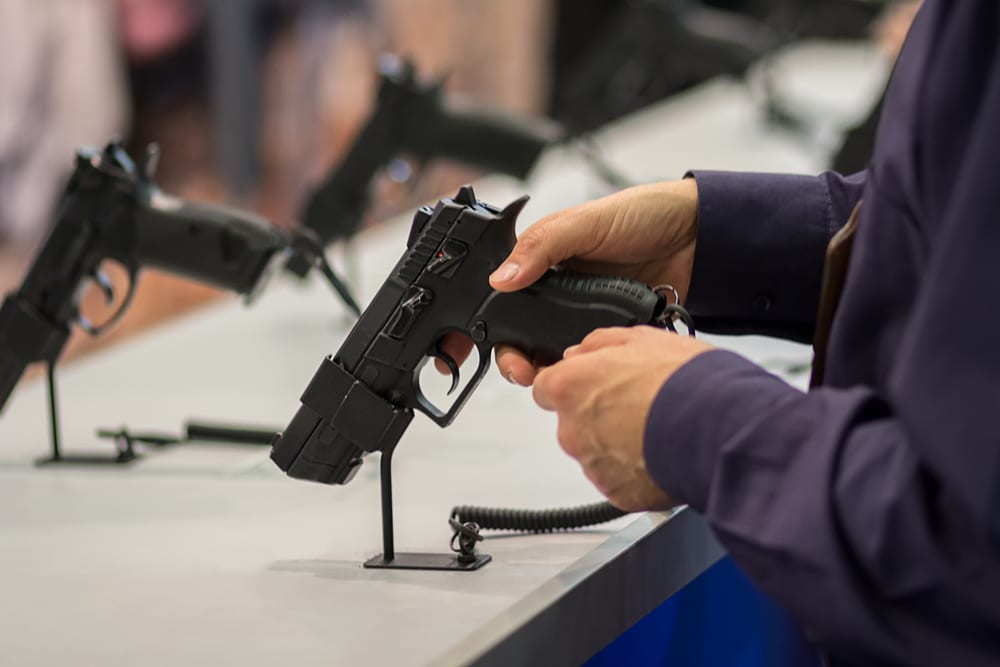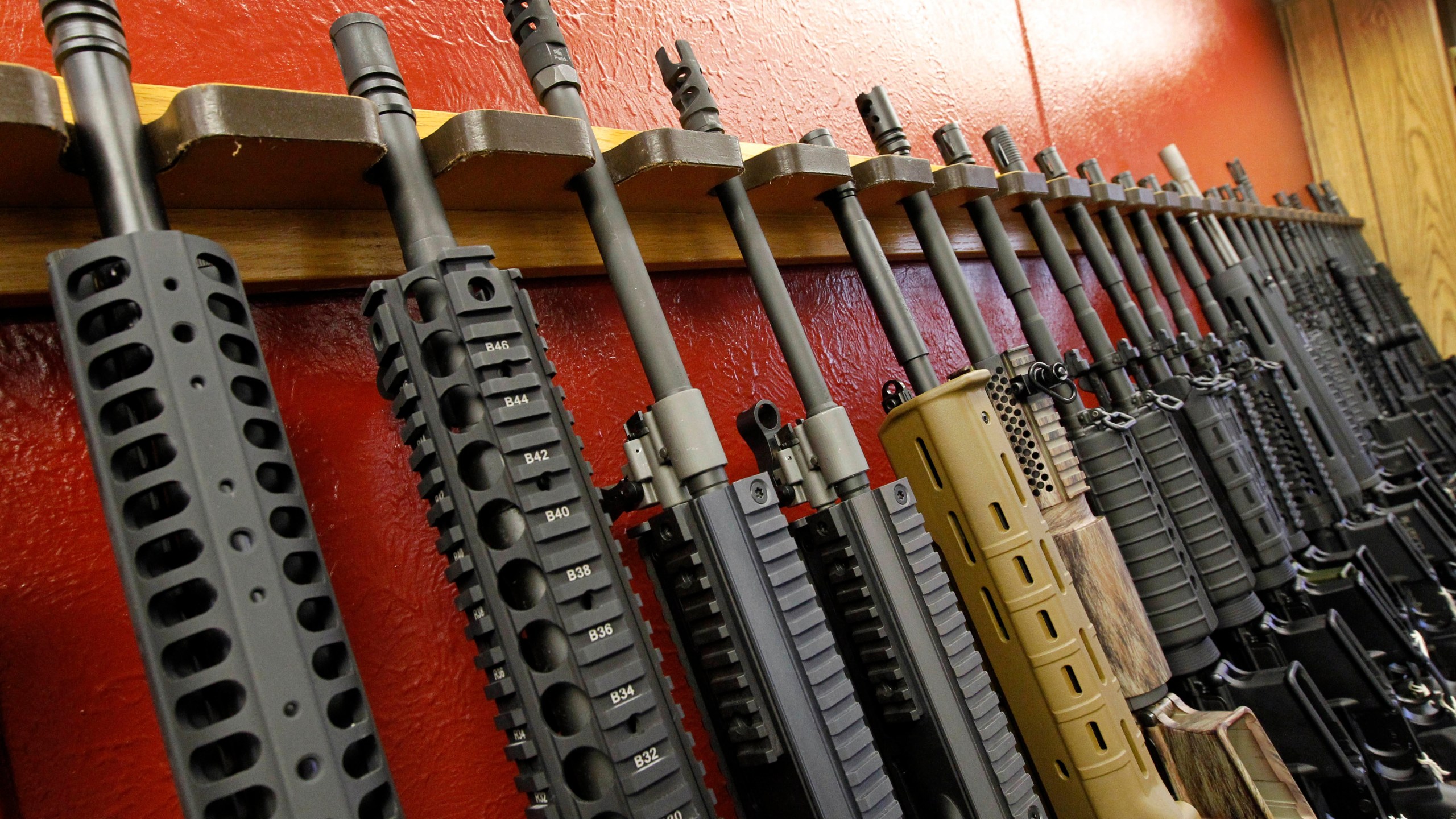5 Essential Steps for Owning an Automatic Firearm in Texas

The right to bear arms is deeply ingrained in the cultural and legal fabric of Texas. For those interested in owning an automatic firearm, understanding the process is essential. This guide details the five crucial steps one must take to legally own an automatic firearm in the Lone Star State, highlighting the specific regulations and requirements involved.
Step 1: Understand Federal Law

The first step to owning an automatic weapon involves a solid understanding of the National Firearms Act (NFA) of 1934, which regulates the possession, transfer, and making of certain firearms, including machine guns. Here are key points:
- Automatic firearms are regulated under the NFA. This means they are subject to extra registration and tax requirements.
- It is illegal to own an automatic weapon manufactured after May 19, 1986, unless you are a government or law enforcement agency.
- All automatic weapons must be registered with the Bureau of Alcohol, Tobacco, Firearms and Explosives (ATF).
- Owners must pay a $200 transfer tax when receiving or purchasing an automatic weapon.
🔍 Note: The ATF conducts thorough background checks, ensuring that only law-abiding citizens can own an automatic firearm.
Step 2: Ensure Eligibility

To purchase and own an automatic firearm in Texas, you must:
- Be a citizen of the United States or a legal resident.
- Be at least 21 years of age.
- Not be a convicted felon, subject to a restraining order, have been adjudicated mentally defective, or otherwise prohibited by state or federal law from possessing firearms.
- Pass an extensive background check through the ATF.
It’s worth noting that the eligibility criteria are more stringent for automatic weapons than for standard firearms due to their classification under the NFA.
Step 3: Secure Legal Counsel

Owning an automatic firearm involves navigating complex legal waters. Here’s what you need to consider:
- Consult with an Attorney: Legal counsel who specializes in firearms can provide guidance on the application process, compliance, and any state-specific regulations.
- Understand Transfer Paperwork: All transactions must be documented correctly on Form 4 or Form 5 for automatic firearms.
- Review Probation and Registration: Ensure all paperwork is in compliance with ATF requirements to avoid future legal issues.
Step 4: Purchase and Pay Transfer Tax

Once you’ve confirmed your eligibility and secured legal guidance, you can proceed to buy an automatic firearm:
- Locate a Seller: Find a legitimate Class 3 Federal Firearms Licensee (FFL) or private owner who can legally transfer an automatic firearm.
- Submit Application: Fill out Form 4 to apply for the transfer tax stamp from the ATF. This form requires the signature of both the buyer and the seller.
- Pay the Tax: A $200 tax stamp must be purchased, which is part of the legal transfer process.
- Wait: The approval process can take several months, involving background checks and local law enforcement checks.
Step 5: Store and Maintain Your Firearm

Owning an automatic firearm doesn’t end with acquisition. Here’s how to ensure compliance and safety:
- Secure Storage: Automatic firearms must be stored in a safe manner, often requiring an ATF-approved safe or similar high-security storage.
- Regular Maintenance: Keep your firearm in good working condition. Regular cleaning and safety checks are essential.
- Record Keeping: Maintain accurate records of ownership, as ATF can perform inspections at any time.
After you've navigated through these steps, you are legally able to own an automatic firearm in Texas. However, owning such a weapon comes with ongoing responsibilities to ensure safety and compliance with state and federal laws.
Wrapping up, owning an automatic firearm in Texas is a process rooted in federal and state laws. Each step, from understanding the NFA to maintaining your weapon, is crucial for legal compliance. It ensures that only those meeting stringent criteria can wield these powerful arms, safeguarding both the rights and safety of Texans. Remember, responsibility doesn't end once you possess the firearm; it's an ongoing commitment to safety, legality, and proper use.
What is the difference between an automatic and semi-automatic firearm?

+
An automatic firearm continues to fire bullets as long as the trigger is held down, whereas a semi-automatic firearm fires one bullet with each trigger pull, automatically loading the next round but not firing it until the trigger is pulled again.
Can I legally own an automatic firearm if I have a felony conviction?

+
No. Federal law prohibits anyone convicted of a felony from owning any type of firearm, including automatic firearms.
How long does it typically take to get approval from the ATF for an automatic firearm transfer?

+
The process can take anywhere from 6 to 12 months due to the extensive background checks and application reviews required by the ATF.
Is there a limit to how many automatic firearms one person can own?

+
No, there is no limit set by law on how many automatic firearms a single person can own, but each firearm must be individually registered, and the transfer tax must be paid for each.